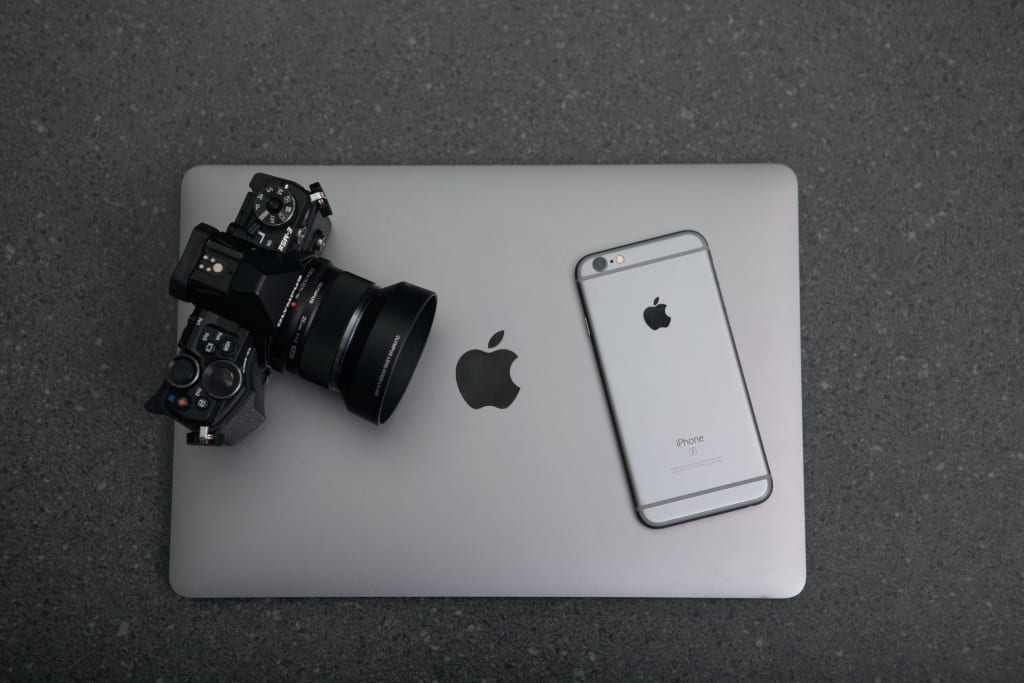The iPhone: A History
The iPhone is a line of smartphones designed, developed, and marketed by Apple Inc. It uses Apple's iOS mobile operating system and combines mobile telephone, digital camera, music player, and personal computer technologies and many more into one device.

**The iPhone: A History**
The iPhone is a line of smartphones designed, developed, and marketed by Apple Inc. It uses Apple's iOS mobile operating system and combines mobile telephone, digital camera, music player, and personal computer technologies and many more into one device.
After many rumors and speculation, Apple CEO Steve Jobs unveiled the first iPhone on January 9, 2007. The phone was released in the United States on June 29, 2007, and quickly became a success. The iPhone has since been released in many other countries around the world.
The iPhone has been praised for its innovative design, user-friendly interface, and powerful features. It has also been criticized for its high price, closed ecosystem, and lack of customization options.
**The iPhone has had a significant impact on the mobile phone industry. It has helped to popularize the smartphone and has set the standard for what a smartphone should be.**
**The Evolution of the iPhone**
The iPhone has evolved significantly since it was first released in 2007. The original iPhone had a 3.5-inch display, a 2-megapixel camera, and 4GB, 8GB, or 16GB of storage. The iPhone 3G, which was released in 2008, added support for 3G cellular networks and GPS. The iPhone 3GS, which was released in 2009, added a 3-megapixel camera, video recording, and 16GB or 32GB of storage.
The iPhone 4, which was released in 2010, had a major redesign. It featured a new glass and metal design, a Retina display, and a 5-megapixel camera. The iPhone 4S, which was released in 2011, added Siri, Apple's voice assistant. The iPhone 5, which was released in 2012, was taller and thinner than previous iPhones. It also had a larger 4-inch display and a new A6 processor.
The iPhone 5S, which was released in 2013, added a Touch ID fingerprint sensor and a new M7 motion coprocessor. The iPhone 5C, which was released in 2013, was a lower-cost iPhone that was available in a variety of colors. The iPhone 6 and iPhone 6 Plus, which were released in 2014, were the first iPhones to be available in two different sizes. The iPhone 6 had a 4.7-inch display, while the iPhone 6 Plus had a 5.5-inch display.
The iPhone 6S and iPhone 6S Plus, which were released in 2015, added 3D Touch, a new pressure-sensitive display technology. The iPhone SE, which was released in 2016, was a smaller iPhone that had the same internal specifications as the iPhone 6S. The iPhone 7 and iPhone 7 Plus, which were released in 2016, were water-resistant and had a new dual-lens camera system.
The iPhone 8 and iPhone 8 Plus, which were released in 2017, had a glass back and supported wireless charging. The iPhone X, which was also released in 2017, had a new edge-to-edge OLED display and a facial recognition system called Face ID.
The iPhone XS, iPhone XS Max, and iPhone XR, which were released in 2018, had new A12 Bionic processors and improved cameras. The iPhone XS and iPhone XS Max had OLED displays, while the iPhone XR had an LCD display.
The iPhone 11, iPhone 11 Pro, and iPhone 11 Pro Max, which were released in 2019, had new A13 Bionic processors and improved cameras. The iPhone 11 had a dual-lens camera system, while the iPhone 11 Pro and iPhone 11 Pro Max had a triple-lens camera system.
The iPhone 12, iPhone 12 mini, iPhone 12 Pro, and iPhone 12 Pro Max, which were released in 2020, had new A14 Bionic processors and support for 5G cellular networks. The iPhone 12 and iPhone 12 mini had 6.1-inch displays, while the iPhone 12 Pro and iPhone 12 Pro Max had 6.7-inch displays.
The iPhone 13, iPhone 13 mini, iPhone 13 Pro, and iPhone 13 Pro Max, which were released in 2021, had new A15 Bionic processors and improved cameras.





Comments
There are no comments for this story
Be the first to respond and start the conversation.